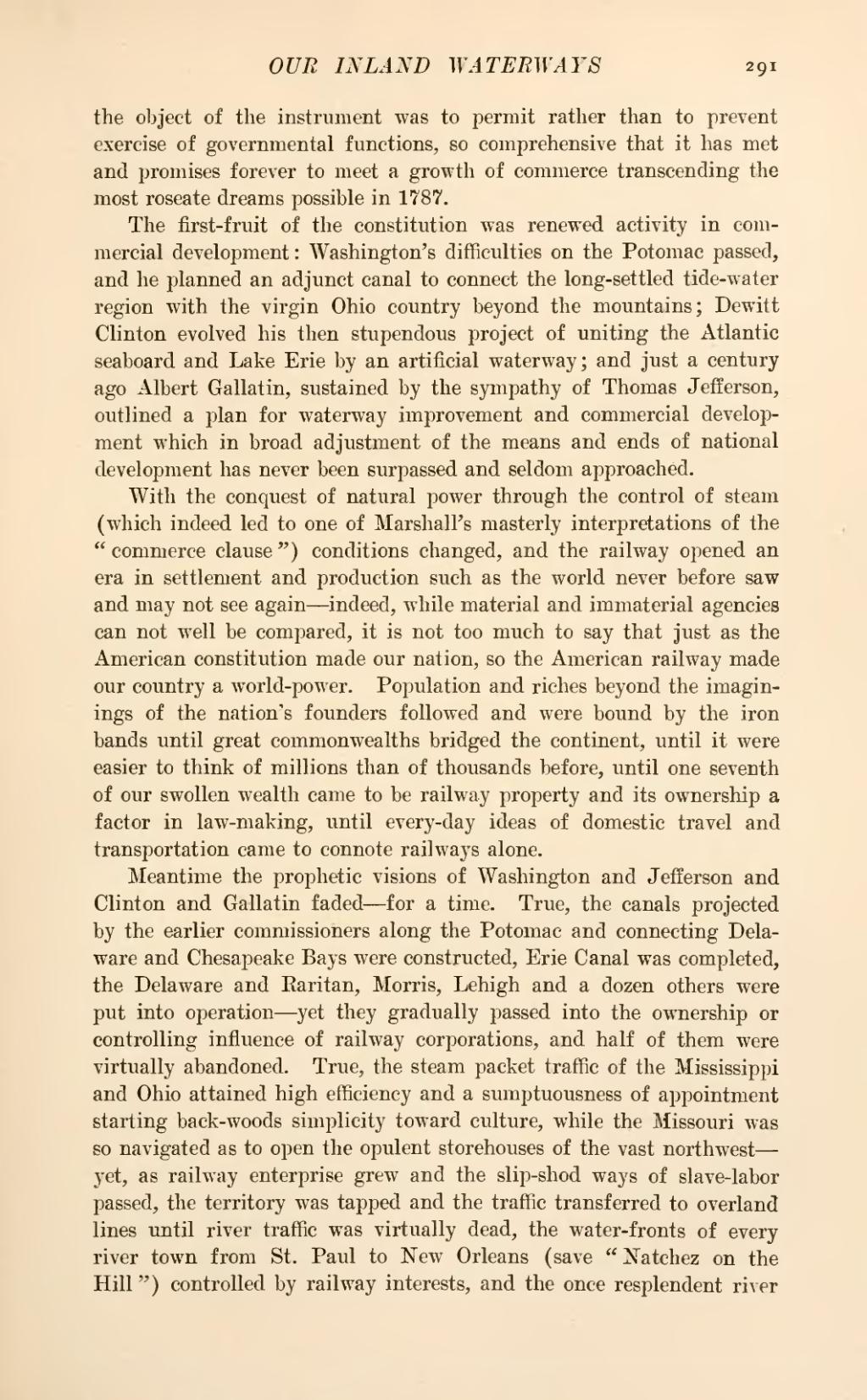the object of the instrument was to permit rather than to prevent exercise of governmental functions, so comprehensive that it has met and promises forever to meet a growth of commerce transcending the most roseate dreams possible in 1787.
The first-fruit of the constitution was renewed activity in commercial development: Washington's difficulties on the Potomac passed, and he planned an adjunct canal to connect the long-settled tide-water region with the virgin Ohio country beyond the mountains; Dewitt Clinton evolved his then stupendous project of uniting the Atlantic seaboard and Lake Erie by an artificial waterway; and just a century ago Albert Gallatin, sustained by the sympathy of Thomas Jefferson, outlined a plan for waterway improvement and commercial development which in broad adjustment of the means and ends of national development has never been surpassed and seldom approached.
With the conquest of natural power through the control of steam (which indeed led to one of Marshall's masterly interpretations of the "commerce clause") conditions changed, and the railway opened an era in settlement and production such as the world never before saw and may not see again—indeed, while material and immaterial agencies can not well be compared, it is not too much to say that just as the American constitution made our nation, so the American railway made our country a world-power. Population and riches beyond the imaginings of the nation's founders followed and were bound by the iron bands until great commonwealths bridged the continent, until it were easier to think of millions than of thousands before, until one seventh of our swollen wealth came to be railway property and its ownership a factor in law-making, until every-day ideas of domestic travel and transportation came to connote railways alone.
Meantime the prophetic visions of Washington and Jefferson and Clinton and Gallatin faded—for a time. True, the canals projected by the earlier commissioners along the Potomac and connecting Delaware and Chesapeake Bays were constructed, Erie Canal was completed, the Delaware and Raritan, Morris, Lehigh and a dozen others were put into operation—yet they gradually passed into the ownership or controlling influence of railway corporations, and half of them were virtually abandoned. True, the steam packet traffic of the Mississippi and Ohio attained high efficiency and a sumptuousness of appointment starting back-woods simplicity toward culture, while the Missouri was so navigated as to open the opulent storehouses of the vast northwest—yet, as railway enterprise grew and the slip-shod ways of slave-labor passed, the territory was tapped and the traffic transferred to overland lines until river traffic was virtually dead, the water-fronts of every river town from St. Paul to New Orleans (save "Natchez on the Hill") controlled by railway interests, and the once resplendent river

